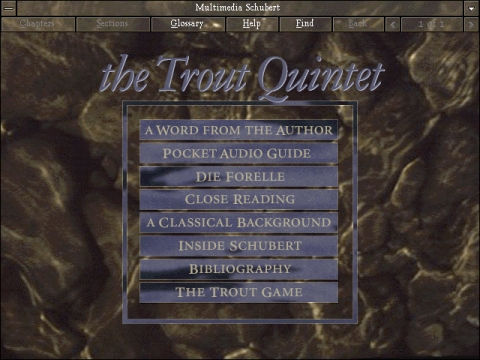Here and elsewhere in the blogosphere, much ink has been spilled — or rather, many pixels generated — regarding Sven Birkerts’s “Resisting the Kindle,” which contends that the e-reader’s rise augurs ill for our ability to contextualize information. The argument hinges on a conditional premise, the soundness of which I doubt: “If … we move wholesale into a world where information and texts are called onto the screen by the touch of a button … [then] we will not simply have replaced one delivery system with another.” At his most dystopian, Birkerts foresees “an info-culture … composed entirely of free-floating items of information and expression, all awaiting their access call.”
Birkerts’s skepticism seems more an indictment of human nature than of the Kindle itself, and I think his assumptions about our capacity to “replace” are misguided. In defending or repudiating his stance, bloggers have invoked everyone from McLuhan to Pascal to Derrida. Bearing this continental mélange in mind, I’d like to call to the stand Herr Martin Heidegger, existentialist and phenomenologist par excellence.
Don’t worry — I’ll try to keep this painless.
In his seminal Being and Time, Heidegger considers equipment and utility: how we relate to our tools, how the tools relate to one another, and how a network of tools mitigates our surroundings. “Equipment,” he avers, “can genuinely show itself only in dealings cut to its own measure” (98).* Well-designed tools possess something he dubs “readiness-to-hand.” Roughly defined, the more something is suited to the use it is made for, the more ready-to-hand it becomes. Readiness-to-hand entails a kind of integration with the environment, an invisibility; the tool belongs so much in the world that we seldom realize we’re using it as we work. So that we may gape at his obscurity, here’s how Heidegger puts it:
The peculiarity of what is proximally ready-to-hand is that, in its readiness-to-hand, it must, as it were, withdraw in order to be ready-to-hand quite authentically. That with which our everyday dealings proximally dwell is not the tools themselves. On the contrary, that with which we concern ourselves primarily is the work — that which is to be produced at the time; and this is accordingly ready-to-hand too. The work bears with it that referential totality within which the equipment is encountered. (99)
Consider, for example, a computer keyboard. When I type on mine, I’m ordinarily unaware of it. Since it’s well-designed and fully functioning, I have no phenomenological reason to take notice of its existence — instead, I concentrate on what I’m typing. The keyboard is incorporated in my location, existing in tandem with my monitor, my lamp and, yes, the intimidating paperback edition of Being and Time resting on my desk.
Of course, if the keyboard broke, or if it were inherently flawed, this wouldn’t be the case, and it’s for this reason that Heidegger introduces “obtrusiveness,” one way of distinguishing between well-wrought equipment and defective tools. The latter make us increasingly aware of their presence and less at ease in our environs; they simply don’t seem to fit into the world as we’ve constructed it. This is the last time I’ll quote our man:
When we notice what is un-ready-to-hand, that which is ready-to-hand enters the mode of obtrusiveness. The more urgently we need what is missing, and the more authentically it is encountered in its un-readiness-to-hand, all the more obtrusive does that which is ready-to-hand become — so much so, indeed, that it seems to lose its character of readiness-to-hand. It reveals itself as something just present-at-hand and no more, which cannot be budged without the thing that is missing. The helpless way in which we stand before it is a deficient mode of concern, and as such it uncovers the Being-just-present-at-hand-and-no-more of something ready-to-hand. (103)
Onto Birkerts, then. The Kindle may feel, at present, isolated and bereft of context, but this is because its readiness-to-hand is concealed by a lack. Something is missing, or, to use Heidegger’s jargon, “obtruding.” Birkerts maintains that the issue is one of context, but this is perhaps irrelevant. What matters is not the nature of what’s missing but that something is missing at all. In Heidegger’s philosophy, people will resist imperfect equipment, especially when its faults obtrude upon their interactions with the world.
If designers solve the Kindle’s problems — whatever they may be — satisfactorily, e-readers could supplant traditional, printed books. We might, that is, come to use the Kindle for identical tasks, in otherwise identical environments, and so enable a radical shift in information access without surrendering anything. But if designers can’t remedy this sense of Heideggerian obtrusiveness, then the risk of wholesale displacement is practically nil. Unless its successor is fully accommodating, the “delivery system” will not be replaced. What obtains for e-readers instead will be tenuous coexistence at best and outright failure at worst.
Thus, the most tendentious part of Birkerts’s argument has little to do with the Kindle or context. It’s that he believes humanity would wittingly adopt deficient tools at the expense of effective ones. This fundamental cynicism is, to a point, understandable; much of marketing and advertising, after all, devotes itself to convincing us that what’s new is necessarily superior, and in the marketplace we’re suckers for such baseless claims. (At this point, any sticker that reads “New and Improved!” seems almost redundant.) But Birkerts underestimates, I think, the functional and aesthetic requisites of an average reader. If Heidegger is right, then the catastrophic, decontextualized info-culture of Birkerts’s imagination is patently absurd — readers won’t, in the short- or long-term, shutter our libraries just because some novel, convenient alternative has asserted itself.
“We misjudge it,” writes Birkerts of the Kindle, “if we construe it as just another useful new tool.” But this is exclusively what it is, at the moment. In order to advance as equipment, the Kindle must demonstrate the readiness-to-hand of that which it endeavors to replace. It hasn’t. Until it does, any talk of supersession strikes me as alarmist.
—
*These citations come from the John Macquarrie and Edward Robinson translation. Heidegger’s style, especially in English, is notoriously labyrinthine and often straight-up unreadable. If, someday, someone can endure the entirety of Being and Time on a Kindle, I think we can safely say the e-readers have won.


